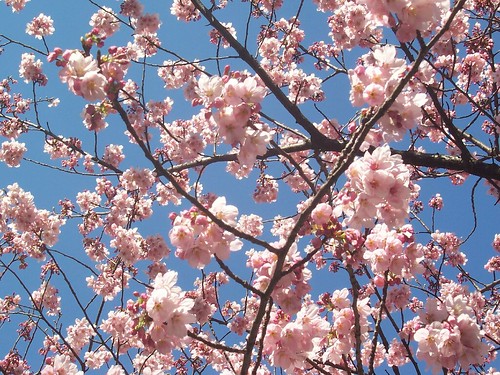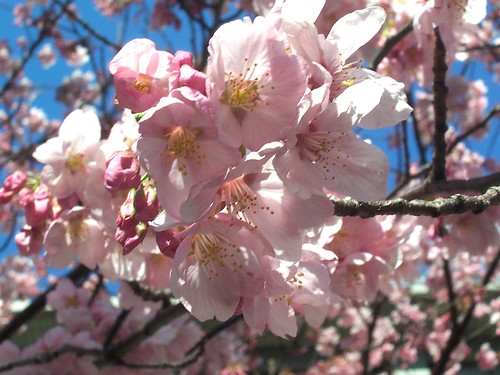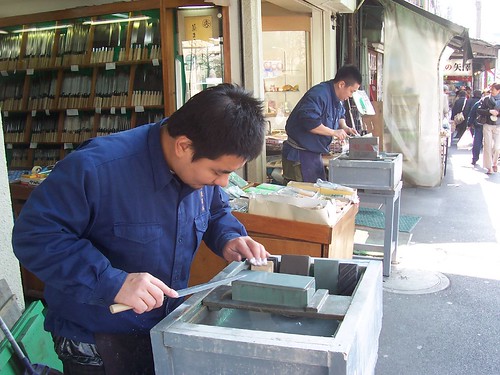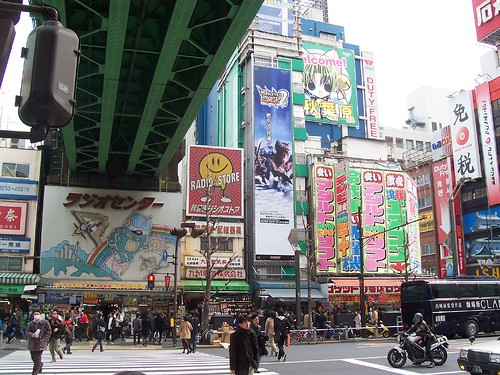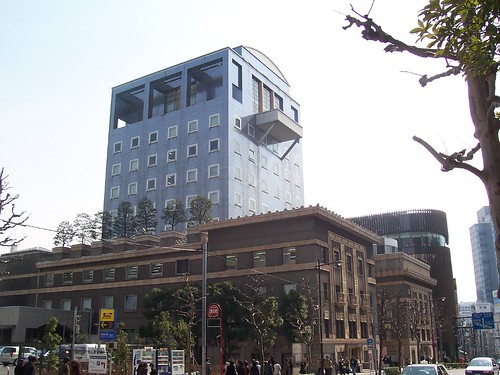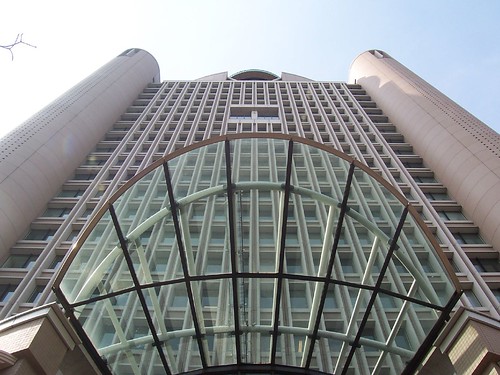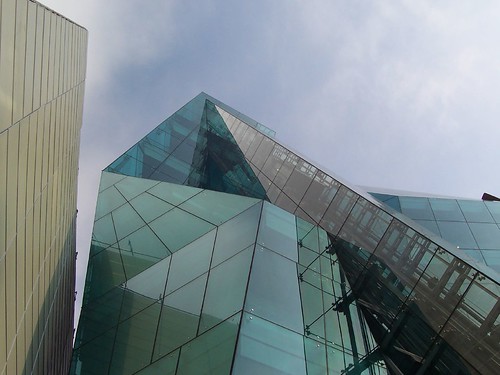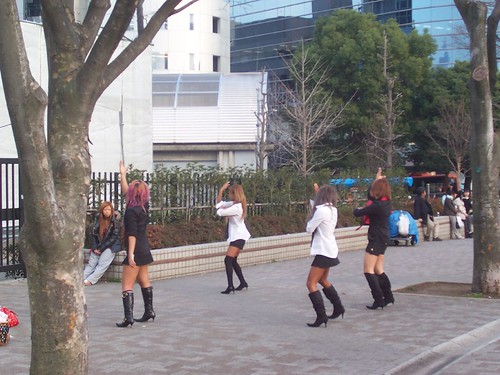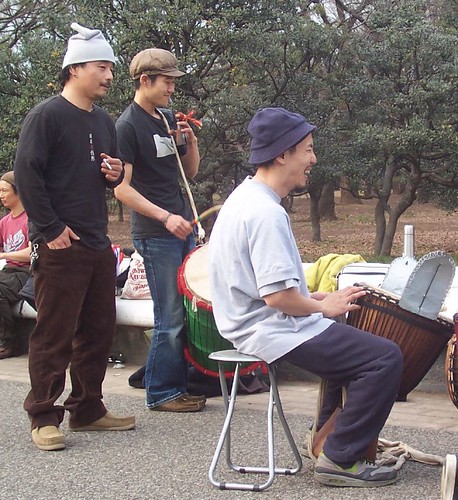Closing chapters
It's a little past 7am here in Tokyo. I'm in the office and have managed perhaps 2 hours sleep, so I'm feeling a little weary but the early morning light is filling the room and I'm not going to manage any more. I must point out that my current situation is completely down to my own frugal state. The university funded me for a generous number of days and simply because of possible flight times I had a few days over at the end. I try and avoid talking money on the blog but the idea of spending almost a week's wages on a night in a cheap hotel doesn't appeal very much - I'd much rather spend the money on good food; just my personal set of priorities in life.
Today is my last full day in Japan and depending on how I'm feeling in a little bit I may do some more exploring, though there aren't many major tourist sites left to see. Yesterday I took a morning walk around the Shinjuku area which is home to many government buildings along with plenty of shopping and the red-light district. The architecture is a mixture of very stereotypical modern Japanese high-rise with some great little alley-ways filled with noodle bars and run by the local Yakuza (The area I've been staying, Ikebukuro, is also one of the largest Yakuza areas). So, a few of snaps from Shinjuku: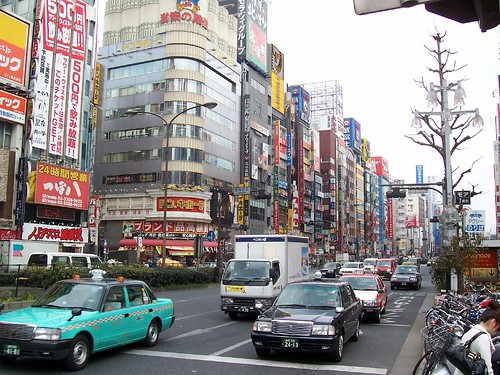

A good tip is to skip going up the Tokyo tower, which is expensive and head to the Metropolitan Government Offices which also has a great viewing area and is free.

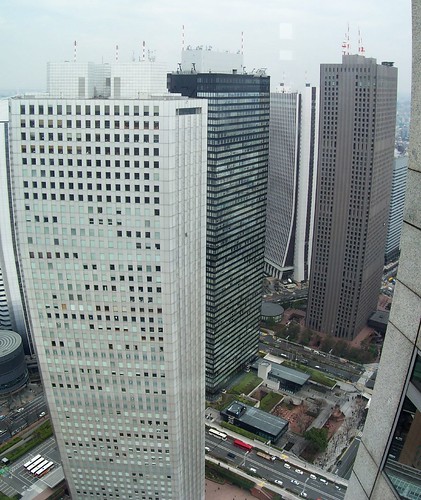
(The photo which looks like it's been taken with a fish-eye is a panorama of three shots tied together using ArcSoft Panorama Maker which I found online yesterday).
After some lunch in one of the local soba restaurants I hopped to the other side of the city with a couple of students from the department to go to the Museum of Contemporary Art in Tokyo (MOT). The museum is an exciting and well designed space with very good lighting, showing some of the best of modern Japanese art. Currently the temporary exhibits are also excellent with a collection depicting the idea of the individual in today's digitised society, and an amazing collection of work by Hiroshi Nakamura. I wish I could find more online to link to but have had little luck.
Sayaka Akiyama records her journeys in a scrap/map format on homemade paper, fabric and any other materials which are relevant to her particular travels (be it within a single building or a more distance trip). She has a series of perhaps 20 or 30 maps created from her time in Barrow-in-Furness in 2004. I find it hard to believe that Akiyama hasn't been heavily influenced by Peter Greenaway's short film A Walk Through H: The Reincarnation of an Ornithologist which is filmed almost in its entirety as a voiceover describing the mysterious journey of Tulse Luper showing a series of maps through H. This is a rather hypnotic film and the DVD of Peter Greenaway's early short films are intriguing if not always fully comprehensible.
Among the other interesting works at the gallery I would advise looking out for Daisuke Nakayama who has some haunting and rather pessimistic views of the digital age and Yuri Shibata whose "Material Color works involve the harvesting of some natural material (hair, kudzu, etc.) to be ground into pigments and made into paint. The resulting paintings are both of and by their subjects. One cannot conceive of a more completely representational art form". Sounds cliched but the work is actually rather fine.
In comparison the Chinese contemporary art scene often feels less polished but consequently more visceral than the Japanese scene which has been growing pretty steadily since the 1940s. The Japanese work seemed knowingly clever whereas the work in Beijing feels more reactionary, which is no surprise.
I've recently discovered artWALK Beijing which looks like a great resource and I'll be going to the next meet-up if at all possible.
I'm really looking forward to getting back to Beijing now, though I've had a great time out here. I have three or four projects to work on and really want to push them forward quickly. This whole trip has been immensely valuable, from the serenity of Kyoto to the frenetic but stimulating atmosphere in Tokyo, both of which have been useful for my work in different ways. When I get back I'll have to prepare some lectures for an upcoming workshop to introduce AdS/QCD which will be more detailed than my previous seminars. I also have a friend/collaborator turning up in a few days and several friends and family booked up to head out. It don't stop!
